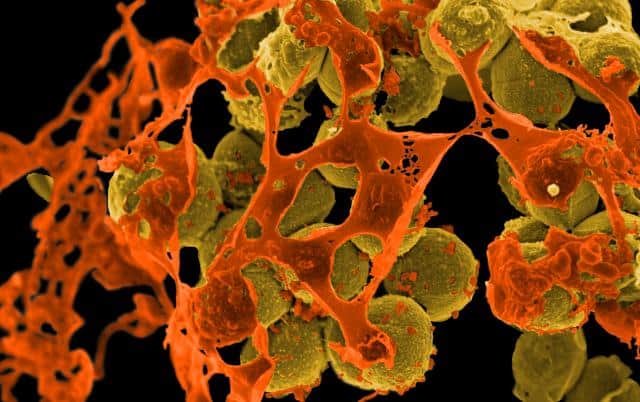July 22, 2019

Drug-resistant bacteria or superbugs do not respect religion, politics, notoriety, or CDC regulations. They are out to win. Unfortunately, some authorities still cling to the belief that superbugs and Methicillin-resistant Staphylococcus aureus (MRSA) residing in the nose are “no big deal”, blurring the distinction between normal flora and the harboring of dangerous pathogens.
This new narrative arose after the drug resistance epidemic spun out of control, and I feel it will be hard to sell to the public. It flies in the face of thousands of MRSA reports of athletes and school children struck down by this dangerous pathogen; And in the face of scientific evidence of the increased virulence of MRSA and the emergence of the deadly dominant strain, USA300. Unfortunately, some major news outlets have joined with the healthcare industry and are inhibiting the allocation of resources needed to reverse this epidemic.
Carriers spread MRSA as much as, if not more than those who are infected. Up to 5 percent of healthcare workers harbor MRSA and are unaware that they are spreading the pathogen to their patients, friends, and even children. These healthcare workers and their contacts should be routinely tested and if positive, their home environment cleaned. I am not ready to live in a sea of MRSA just because my doctor says so. Northern Europe does not have to, so neither should I.
MRSA is not normal flora. Multiple peer-reviewed studies have shown that patients who harbor MRSA are at an increased risk for MRSA infections. The good news is that the eradication of MRSA harboring in a patient has been demonstrated to reduce the chances of acquiring MRSA infection following hospital discharge. According to the Veterans Health Administration, isolation of carriers has also been shown to reduce facility-wide infections by 66 percent.
Decolonization of healthcare workers is successful in 88 percent of cases, and until decolonized, they should not be in direct patient contact. Healthcare workers are not tested for harboring dangerous pathogens, which places both themselves, their patients, and their families at risk. What is not widely known, is that many facilities have draconian workers’ compensation policies, and many healthcare personnel end up working even when they have active infections.
Currently, the World Health Organization (WHO) recommends that in countries with adequate healthcare resources, all patients undergoing surgery should be screened for Staph aureus. In the United States, we do not even routinely screen preoperatively for MRSA, the more deadly form of Staph. And, as evidenced by recent commentaries, some acute care facilities are not even following CDC recommendations for isolation of MRSA carriers and those infected with MRSA.
The United States does not have a comprehensive and systemized tracking system for these dangerous pathogens either. For example, the most dangerous superbugs, Candida auris and carbapenem-resistant Enterobacteriaceae (CRE), are not required to be reported nationally. Of the plethora of dangerous pathogens, only Clostridium difficile (C. diff) and MRSA are required to be reported nationwide for hospital-onset. And not even all of the MRSA infections are required to be reported–only bloodstream infections.
We must not adopt a lackadaisical stance of not worrying about these pathogens, and simply hope that everything will be all right. It is a stance which is reminiscent of one taken during the 1924 Bubonic Plague epidemic in California. As described in the historical review, “The Pandemic Century,” the State of California threatened to make reporting cases a felony, and news media tried to downplay infections, using terms such as “strange malady” and “malignant form of pneumonia.”
Denying the problem will certainly cost lives and has the potential to bring many fields in modern medicine to a near standstill, including chemotherapy, transplantation, and even elective surgery.
Many in the industry ask: How will the healthcare system pay for interventions to combat drug resistance? Maybe by reallocating resources, such as the $3.1 million dollar average annual salary of CEOs at 22 major non-profit hospitals. Certainly, safeguarding the welfare of patients and healthcare staff is of paramount importance.
Economic and political forces in the United States are impeding the adoption of these important infection control tenets. But, as the toll of drug resistance on American citizens mounts, denials will become harder to make, and political policy may well merge with science. Hopefully, not too late.
###
About the Author: Dr. Kevin Kavanagh is Board Chairman of Health Watch USAsm and Associate Editor for the Journal of Patient Safety. He serves on the NQF’s Consensus Standards Approval Committee and on the AHRQ Health Care Effectiveness and Outcomes Research study panel.











